Why Planning Reforms Work: Abolishing single family zoning
Amid the housing crisis, it is easy to get bogged down in finger pointing. Whether it be directed at negative gearing, urban sprawl or housing supply; the truth is it is likely a complex culmination of all these factors. What is apparent is that planning reforms wield significant potential to generate housing supply and lower rents. Whilst not a silver bullet, it is an important variable in a convoluted problem.
Auckland
Auckland City Council has emerged as a world-leader in catalyzing housing supply. In 2016, Auckland abolished single-family zoning, thereby upzoning around 75% of residential areas. At about the same time, Brisbane City Council was reinforcing single-family typologies by ‘banning’ townhouses and other diverse housing forms in our low-density suburbs. Just as many international cities facing housing affordability challenges were racing to ‘ban’ single-family zoning, single-family zoning became synonymous with Brisbane’s ‘Low Density Residential zone’. effectively Precluding development other than for detached dwelling houses removes housing choice, reduces affordability and exacerbating sparse sprawling settlements
Economic analysis shows that Auckland’s upzoning of residential areas has been successful in generating housing supply, especially of multiple dwelling typologies. It is estimated that the reforms have resulted in the delivery of 20,000 additional dwellings over its first five years – comprising 4% of total stock in the municipality. As this figure does not include the approved but not-yet delivered stock, the full benefits of the reforms are likely even greater than currently understood.
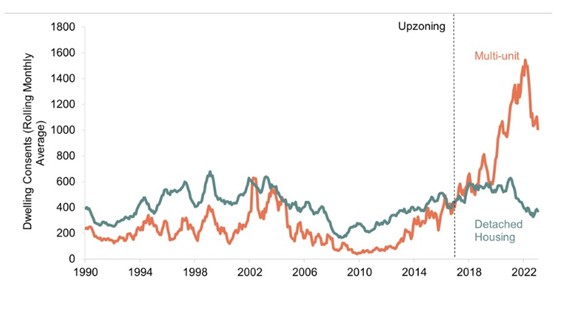
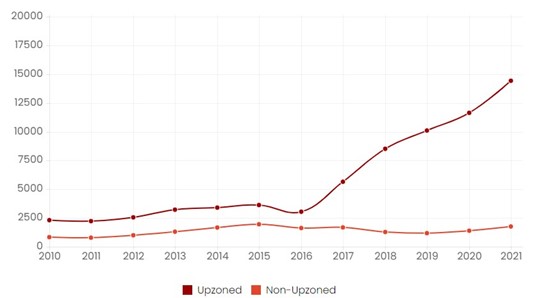
Prior to zoning reforms, Auckland was the most expensive New Zealand city for renters, who were charged extra based on the attraction of living there compared to other cities. Since the mid-2010s, whilst rents have grown, this has occurred at a much slower rate than comparable cities, to the extent that Auckland is now cheaper for renters than Wellington. Research indicates that without upzoning reforms, rents would be 14-35% higher.
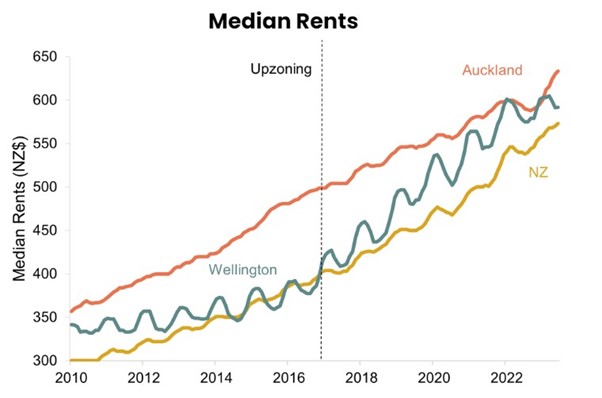
When considering the cost of rent relative to household income, Auckland is now more affordable than the New Zealand average. Whilst the median rent to median income ratio has increased to 22.5% across New Zealand, Auckland’s ratio has decreased from 22.7% in 2016 to below 20% in 2023.

Minneapolis
Minneapolis 2040 Plan, enacted in 2020, saw the abolition of single family zoning with the intent to enable duplexes and triplexes to be achievable anywhere in the city. Notwithstanding, the reforms and success of housing supply in Minneapolis is not solely attributable to eliminating single family zoning. Progressive policies such as the reduction of parking maximums and relaxations of Accessory Dwelling Unit restrictions have occurred simultaneously and expedited housing delivery.
Missing middle typologies have grown in delivery since the adoption of the plan, most of which would not have been feasible previously. Rates of housing supply in dense typologies have grown significantly since the adoption of the plan and implementation of parking reform – undoubtedly vindicating the policy reform. As for more ‘gentle’ typologies, such as the plexes, abolition of single family zoning has created an opportunity for typologies that was previously unimaginable, and through awareness and greater acceptance, can grow to comprise a small, but not insignificant portion of housing supply.
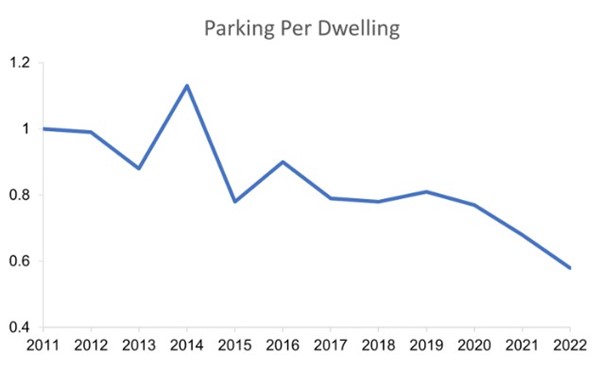
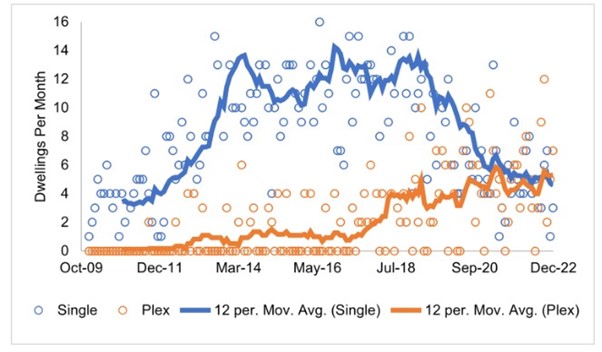
Since 2017, nominal rents in Minneapolis have reduced, which is contrary to trends across Midwestern cities, where significant rent rises have occurred. When coupled with rising incomes, the planning reforms to generate increased housing supply have made considerable steps in improving affordability. Whilst abolishing single family zoning has been a catalyst in unlocking missing middle typologies, the implementation in Minneapolis has demonstrated the importance of alignment with parking policy and targeted upzoning, such as along transit corridors, to successfully devise comprehensive planning reforms.
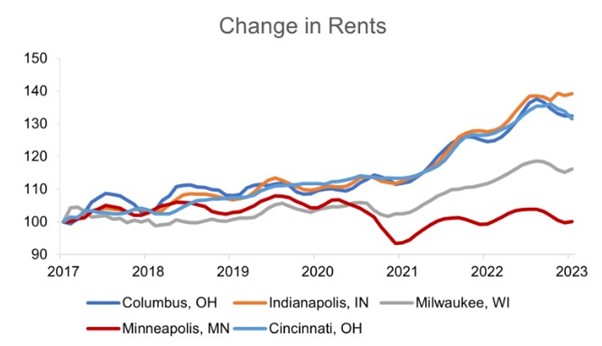
Portland
Portland City Council launched the Residential Infill Project (RIP), which came into effect in August 2021. The project reformed limits on building size, unlocked opportunities for medium density typologies and enabling accessory dwellings in single-family zones. Within the first year of adoption, the reforms have enabled a sharp rise in medium density housing construction, which is the most common new dwelling typology in the affected areas, significantly outweighing single dwelling construction.
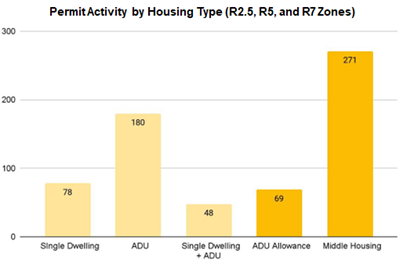
A major result emerging from the reforms is the increased construction of medium density housing near centres and amenity-abundant corridors, which can serve as a model for the ‘high amenity areas’ framework contained in the draft SEQ Regional Plan.
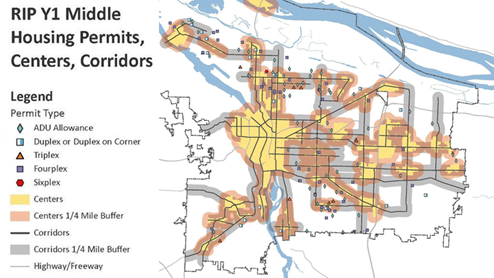
Accessory dwellings (or secondary dwellings/granny flats) have become far more feasible under the reforms. Dwelling houses are allowed to have two accessory dwellings and duplexes are permitted to contain one attached unit, which has catalysed the delivery of studio-style living. An example is depicted below, and presents a housing typology that is low maintenance and responsive to changing household sizes. Smaller homes, as enabled by the reforms, are $117,000 (US) less expensive on average, compared to houses with a larger footprint. All of this, and it presents as if it were a dwelling house – demonstrating a model implementation of gentle density.
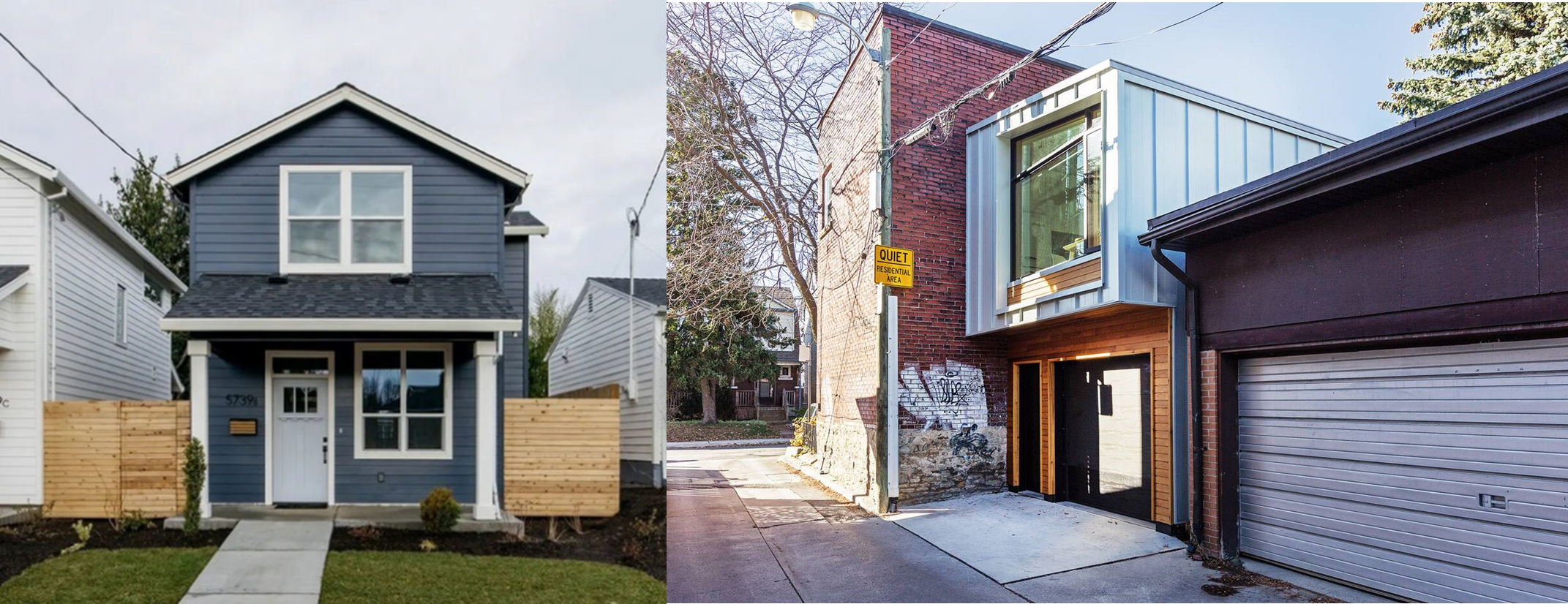
So, what could this look like in Brisbane?
Despite years of YIMBY campaigning, little progress has been made in the delivery of ‘missing middle’ typologies, although we welcome the increased efforts to prioritise gentle density through the Housing Summit actions including Planning Regulation reforms for secondary dwellings and rooming accommodation, under the draft ShapingSEQ Update and draft Redlands Housing Strategy. Rather, regressive action has been taken to ‘ban’ multiple dwellings from occurring in low density residential areas.
At YIMBY QLD, we hope to see policies similar to those in Auckland, Minneapolis and Portland adopted by SEQ LGAs. The draft ShapingSEQ Update presents frameworks for ‘gentle density’ and ‘high amenity areas which we are supportive of and hope to see actioned by local governments, but hope the final version goes further to facilitate multiple dwellings in low density suburbs (invisible density / house scale). Abolishing single family zoning essentially empowers the delivery of gentle density, creating more diverse, affordable and walkable communities rather than forcing new residents to the urban fringe.
Could we facilitate housing supply through ‘gentle’ forms of density, in suburban areas that boast access to schools, parklands, public transport and employment?
Could a more diverse range of housing types in our suburbs enable ageing populations to age-in-place, with less maintenance requirements than a dwelling house, which could be better occupied by a family?
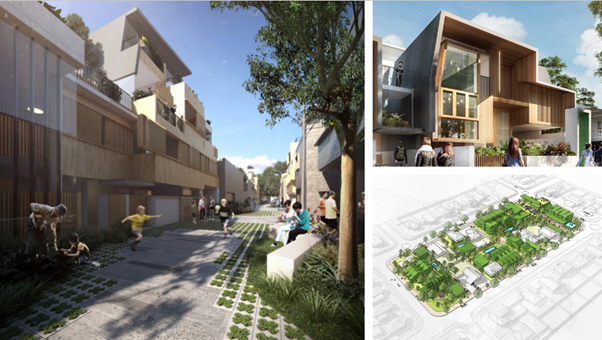
Perhaps a more diverse range of typologies of residents in communities may create more activity in what are otherwise dormant suburbs that effectively function as bedroom communities. Having a greater density (which does not imply Hong Kong style skyscrapers) may stimulate local businesses to succeed and boost local trips. A shift in our housing supply is necessary to support a growing and ageing population, with a changing household composition. We hope these international examples provide inspiration to SEQ LGAs. And better yet, generate meaningful solutions to the housing crisis.

Article Links:
A Detailed Look at the Outcomes of Minneapolis’ Housing Reforms — One Final Effort
https://www.mustdobrisbane.com/eat-drink/cafes/west
https://www.arkhefield.com.au/projects/density-and-diversity-done-well/



